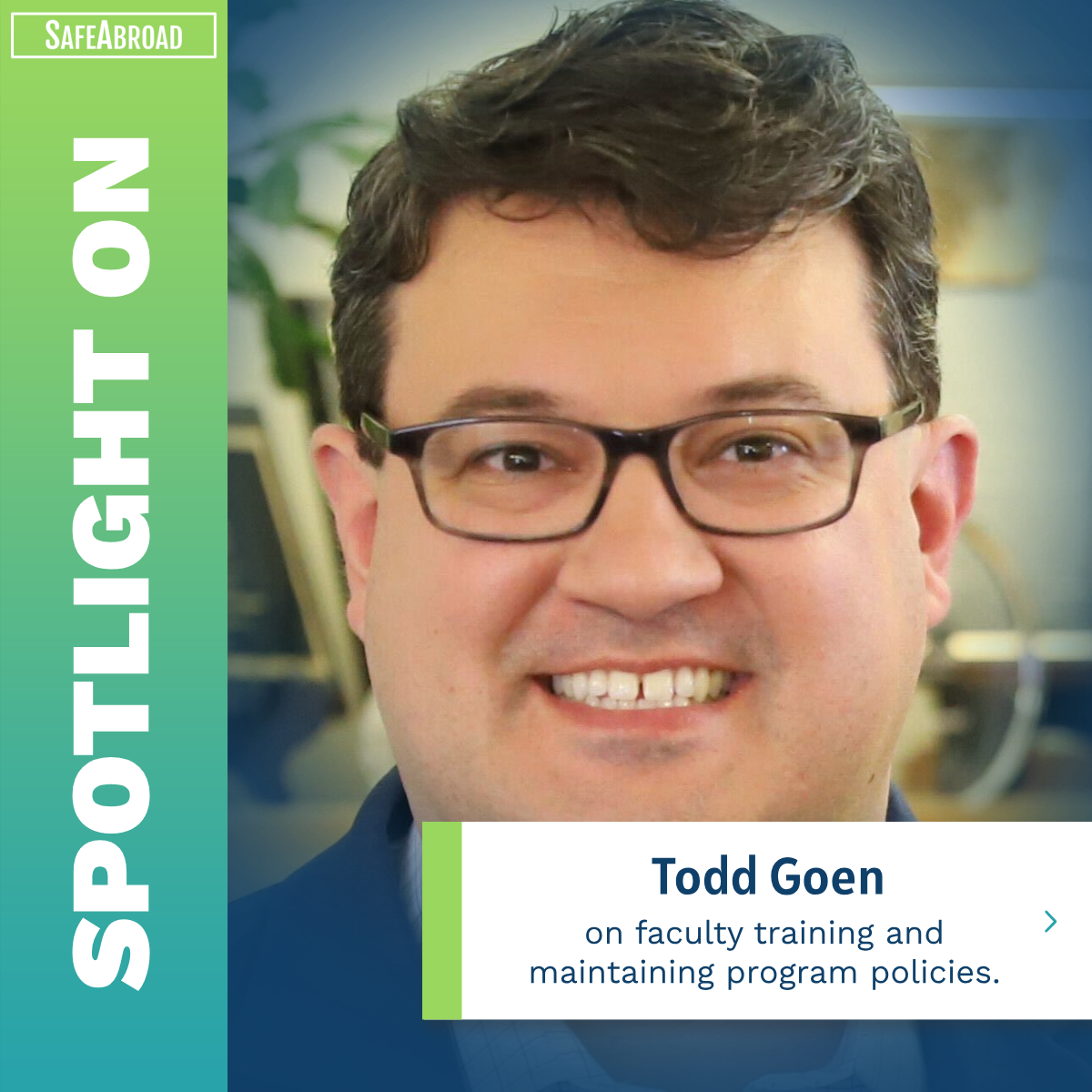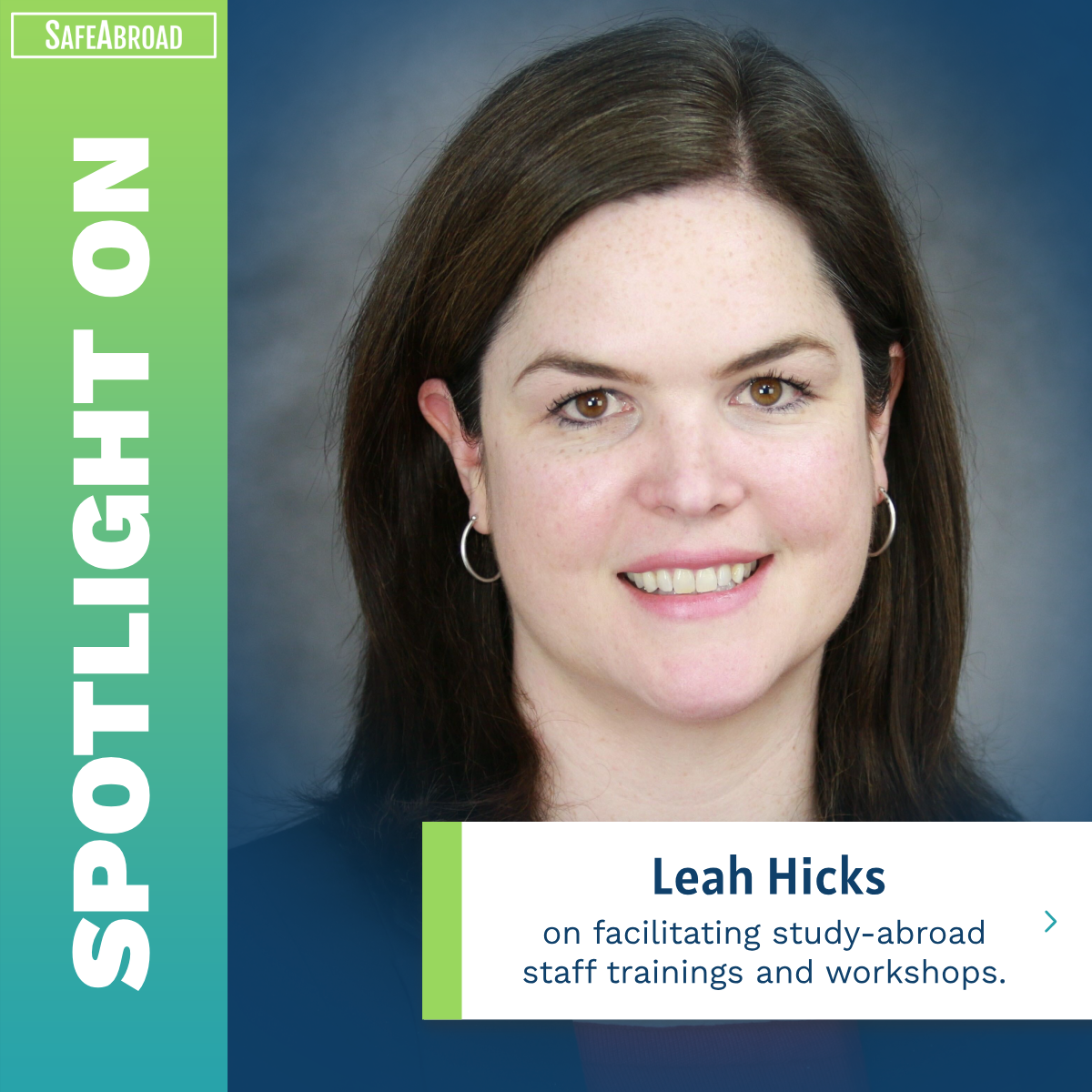What initially inspired your passion for international education and global engagement?
In college, I led a local outreach in the San Gabriel Valley to Latino community children and their families from lower socioeconomic groups. I brought volunteers from a university to engage with the youth in dialogue, like a day camp. It was a faith-based university, and people from 20 different countries were among the volunteers. The youth didn’t speak English, and many volunteers didn’t speak Spanish, but I loved creating opportunities for meaningful relationship building despite language barriers. That sparked my interest in understanding what motivates people to cross cultures. Right after I graduated from college, I fell into a job teaching English as a second language in Taiwan for two years with just two weeks’ notice. I’d only been to Mexico once before that. I grew tremendously—it was my rite of passage into the world. These experiences helped me realize how much I loved learning about people and cultures and being a humble learner.
Is there a moment or experience from your international work or travels that significantly shaped your perspectives on student safety abroad?
A few come to mind, primarily some poor decisions I made when I was young and living abroad without proper orientation. For example, traveling alone throughout Asia with just a Lonely Planet book—before iPhones existed—presented significant risks. With more resources available, I see the importance of and how to best safeguard individuals better. At Pepperdine’s International Programs Office, I have emphasized partnership to safeguard our community. I have used my personal and professional experiences to emphasize safeguarding resources while encouraging students to make good decisions based on available information.. Also, there’s no truly “safe” place; serious incidents can happen anywhere, including at home campuses.
What are Pepperdine University’s key pillars to student and faculty safety in study abroad, and how do you assess risks and make decisions about program viability?
Pepperdine utilizes U.S. Department of State travel advisory levels and requires exceptions for specific itineraries that pose greater risk. Decisions are made by the central administration with feedback from my team and other stakeholders. Pepperdine operates our own brick-and-mortar locations rather than partnerships, focusing on long-term, stable investments in locations in Europe, South America, Washington, D.C., and hopefully Asia in a couple years from now. Our approach involves upfront communication about health needs, identity needs, and financial preparedness with students and families to empower them and help prevent negative experiences. Another pillar is coaching parents to become supporters and coaches, making the student the center of the enterprise from initial engagement through their return. We also emphasize student wellness and safety experiences, balancing required and optional resources and using alumni’s feedback on their health and safety experiences to communicate risks and how to mitigate them in an authentic manner.
How do you include parents and obtain faculty buy-in regarding safety abroad?
Faculty experience pre-departure orientations alongside students to hear exactly what messages are delivered. Our onsite directors handle daily health and safety management. For faculty-led programs, we hold tabletop exercises from similar cases in the past and pairing more experienced faculty with newer faculty to convey the importance of their responsibilities. These methods create a sense of healthy fear and awareness among faculty, ensuring they understand the resources available and steps to take in health and safety issues when they arise.
Can you describe a time when you had to manage a critical incident abroad, and what leadership lessons did you learn?
During the Paris terror attacks several years ago, I was reminded of the importance of immediate connectivity with students, and clear communication are crucial. We revised policies to ensure constant connectivity, re-established clear chains of command, protocols, and emergency responsibilities. Transparent, concise communication without overpromising, coupled with thorough debriefing and honest evaluations of successes and failures, were significant leadership lessons.
Looking ahead, what do you think are the biggest challenges and opportunities for safety in study abroad?
Shifting political landscapes, wars, and retrenchment we are seeing across countries over the last few years rather than globalized mentalities pose challenges. The definition of “safe” locations is becoming narrower, making perspective-building in various regions crucial. Additionally, I and the international education field are seeing students with less experience and more difficulty in managing their emotional and mental health. These concerns are often escalated with substance abuse issues. Equipping students with information, counsel, training and directing them to appropriate programs at the right times is critical. To support students’ mental and emotional health, we are also seeing the importance of staff care and proper staff to student ratios.






